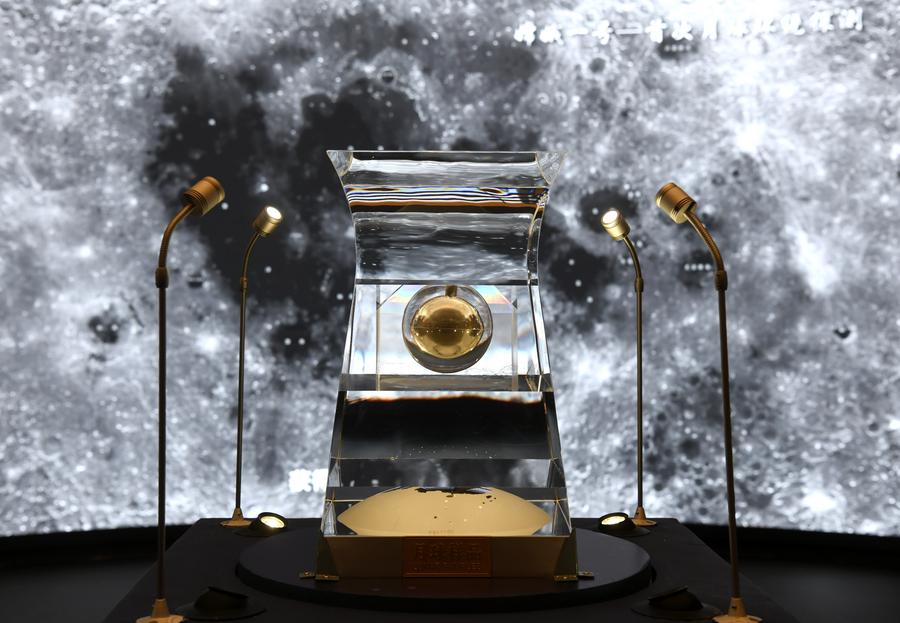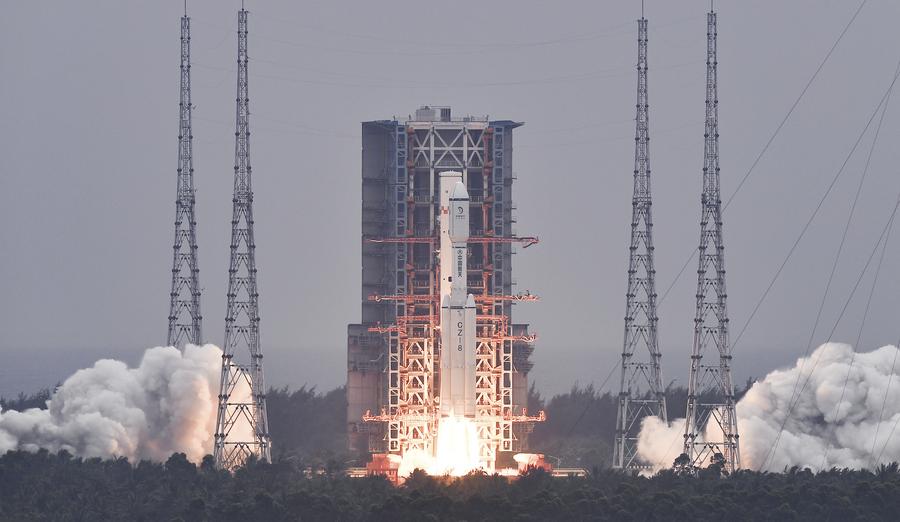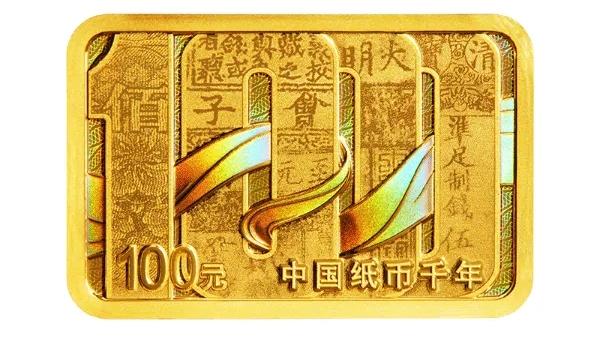"Bridge" in place, China ready to sample on moon's far side
Queqiao-2 is expected to serve as a vital communication link between Earth-based controllers and the Chang'e-6 probe, which will be launched in the first half of this year to collect samples from the far side of the moon.
Scientists believe that samples from the far side of the moon have greater research value.
Aside from Chang'e-6, China also plans to launch Chang'e-7 in 2026 and Chang'e-8 in 2028. Chang'e-7 and Chang'e-8 will form the basic model of a lunar research station to carry out lunar environment exploration.
BEIJING, April 19 (Xinhua) -- As China is determined to drive economic growth via sci-tech innovations, it also casts its wisdom and courage in exploring Earth's closest neighbor -- the moon. This year, it plans to retrieve lunar samples from the far side of the moon for the first time in human history.
To carry out this unprecedented mission, it first launched Queqiao-2, a new relay satellite, on March 20 to provide Earth-Moon communications services. The satellite has recently entered its target elliptical orbit around the moon and completed in-orbit communication tests, according to the China National Space Administration (CNSA).
Queqiao, meaning magpie bridge, derives its name from a Chinese folktale, in which magpies formed a bridge across the Milky Way with their wings to help a separated couple reunite. In reality, Queqiao-2 is expected to serve as a vital communication link between Earth-based controllers and the Chang'e-6 probe, which will be launched in the first half of this year to collect samples from the mysterious far side of the moon.
As the moon's revolution cycle is the same as its rotation cycle, the same side always faces Earth. The other face, most of which cannot be seen from Earth, is called the far side or "dark side" of the moon. This term doesn't refer to darkness but rather to the mystery shrouding the moon's largely unexplored terrain.
In order to unravel the mystery, China launched the Chang'e-4 probe, which realized the first-ever soft landing and roving on the far side of the moon at the beginning of 2019. Before that, all relevant knowledge came from speculation based on remote-sensing images.

This photo taken by the rover Yutu-2 (Jade Rabbit-2) on Jan. 11, 2019 shows the lander of the Chang'e-4 probe. (China National Space Administration/Handout via Xinhua)
China launched its first Queqiao satellite in 2018 to support communications and data transmission between Chang'e-4 and Earth. But the first relay satellite has exceeded its designed lifespan. Now, the more powerful Queqiao-2 satellite will take over its communications relay services.
As a backup of the Chang'e-5 probe, Chang'e-6 is set to collect approximately 2 kilograms of lunar samples by shoveling and drilling. The probe will also conduct scientific investigations within the designated landing zone situated in the South Pole-Aitken Basin.
The mission will demand a series of breakthroughs in key technologies, such as automatic sample collection, take-off and ascent from the far side of the moon.
Scientists believe that samples from the far side of the moon have greater research value. Unlike the relatively low-lying and flat terrains found on the near side, the far side has higher elevations and is more densely covered with craters. It suggests that the far side has been subjected to a longer history of impacts, indicating an older geological age for in-depth exploration.
Li Ting and her research team from the Beijing Research Institute of Uranium Geology, a subsidiary of the China National Nuclear Corporation, discovered from the Chang'e-5 samples a new mineral, Changesite-(Y). She is much looking forward to samples from the moon's "fresh and unfamiliar" far side.
"If Chang'e-6 can get some older lunar samples exposed after impacts or residues of meteorites and asteroids, it may bring us more deep space information," said Li.
Humans have been curious and imaginative about the moon since ancient times. Li Bai, a renowned poet from the Tang Dynasty (618-907), once wrote a poem to ask when the moon appeared in the blue sky. In fact, the origin of the moon has not only inspired romantic sentiments among literati and scholars throughout history, but also remained a focus of research in the field of lunar science.
In the 16th century, people started using telescopes to observe the moon. In January 1959, the Soviet Union launched the Luna 1 probe, the world's first lunar exploration satellite. In October 2007, China achieved a milestone with the successful launch of the Chang'e-1 satellite, marking the country's inaugural lunar exploration mission.
From the United States' Apollo 11 mission in 1969 to China's Chang'e-5 mission in 2020, humans have accomplished a total of 10 lunar sampling missions. The initial nine samplings all took place during the 1960s and 1970s. Following a 44-year hiatus, Chang'e-5 retrieved 1.731 kilograms of lunar samples, opening a new chapter in cutting-edge lunar research.

The lunar samples No. 001 brought back by China's Chang'e-5 probe is on display at the National Museum of China in Beijing, capital of China, Feb. 27, 2021. (Xinhua/Jin Liangkuai)
The lunar rocks and soil encapsulate the key to decoding the mysteries of billions of years of transformations on the moon. Nearly all our understanding of the moon's inception and development stems from the study of lunar samples, said Yang Wei, researcher with the Institute of Geology and Geophysics, Chinese Academy of Sciences.
A widely accepted theory in the scientific community believes that approximately 4.5 billion years ago, a Mars-sized celestial body known as Theia collided with nascent Earth. The collision caused debris to be ejected into space, which eventually coalesced around Earth to form the moon. This hypothesis owes much to the analysis of lunar samples collected during the United States and Soviet Union lunar missions, Yang said.
Different from previous nine missions which focus on low-latitude areas, Chang'e-5 targeted mid-latitude regions of the moon. With advanced microanalysis technologies, scientists have made groundbreaking discoveries from the study of lunar soil retrieved by Chang'e-5.
According to the CNSA, one of the most notable research results dated the youngest rock on the moon at around 2 billion years in age, extending the "life" of lunar volcanism 800-900 million years longer than previously known.
In the following studies, Chinese scientists further revealed a new mechanism for how young volcanoes took shape on the moon and new clues about the moon's water resources.
The new lunar mineral Changesite-(Y), the first discovered by China and the sixth by humankind, makes China the third country in the world to have discovered a new mineral on the moon.
Li Ting and her team made this great discovery on a single-crystal particle with a radius of about 10 microns, which was only one 200th to 300th the size of a sesame seed. It was isolated from 140,000 tiny lunar particles of about 15-milligram Chang'e-5 samples.
Through the meticulous analysis by Li's team, this imperceptible particle became an essential piece of the moon's geological puzzle. "Planets are composed of interconnected puzzle pieces. Each new mineral we uncover adds a fresh dimension to their intricate pattern, bearing historical imprints of their formative environments," Li said.
For example, Changesite-(Y) is rich in rare earth elements and its magnesium to iron ratio is different from previously identified same subgroup minerals, reflecting the unique characteristics of the Chang'e-5 landing site, Li said.
However, the "puzzle pieces" obtained by human missions remain notably restricted. So far, all 10 sampling missions have been focused on the near side of the moon. If the first nine sampling sites were to be connected to form a polygon, it would merely account for 4.4 percent of the lunar surface. Even with the Chang'e-5 samples, their representativeness is still far from sufficient, Yang said.

A Long March-8 rocket, carrying the relay satellite Queqiao-2 for Earth-Moon communications, blasts off at the Wenchang Space Launch Center in south China's Hainan Province, March 20, 2024. (Xinhua/Yang Guanyu)
"In our geological research on Earth, we will strive to gather the most fundamental data whenever exploring a new location. However, in the case of the moon, humanity has only obtained samples from a handful of sites, with none from high-latitude regions or the far side. Therefore, from a geological perspective, the moon remains a vastly uncharted territory," Li said.
Aside from Chang'e-6, China also plans to launch Chang'e-7 in 2026 and Chang'e-8 in 2028. Chang'e-7 and Chang'e-8 will form the basic model of a lunar research station to carry out lunar environment exploration.
The landing and sampling sites of China's moon missions in the coming years are mainly in the lunar south pole region or on the far side of the moon, the CNSA said.
"Building a research station on the moon, and exploring deeper space using the moon as a base, was once an imagination in science fictions. Now, it may become a reality in my lifetime," Li said.
Photos
Related Stories
- China's science foundation funds 31 bln yuan in research in 2023
- Female frogs use winking as flirting tactic: study
- Proportion of Chinese citizens with scientific literacy reaches 14.14 pct
- Hong Kong researchers pioneer new stem cell platform for immunodeficiency treatment
- Chinese scientists find first experimental evidence of graviton-like particle
Copyright © 2024 People's Daily Online. All Rights Reserved.









